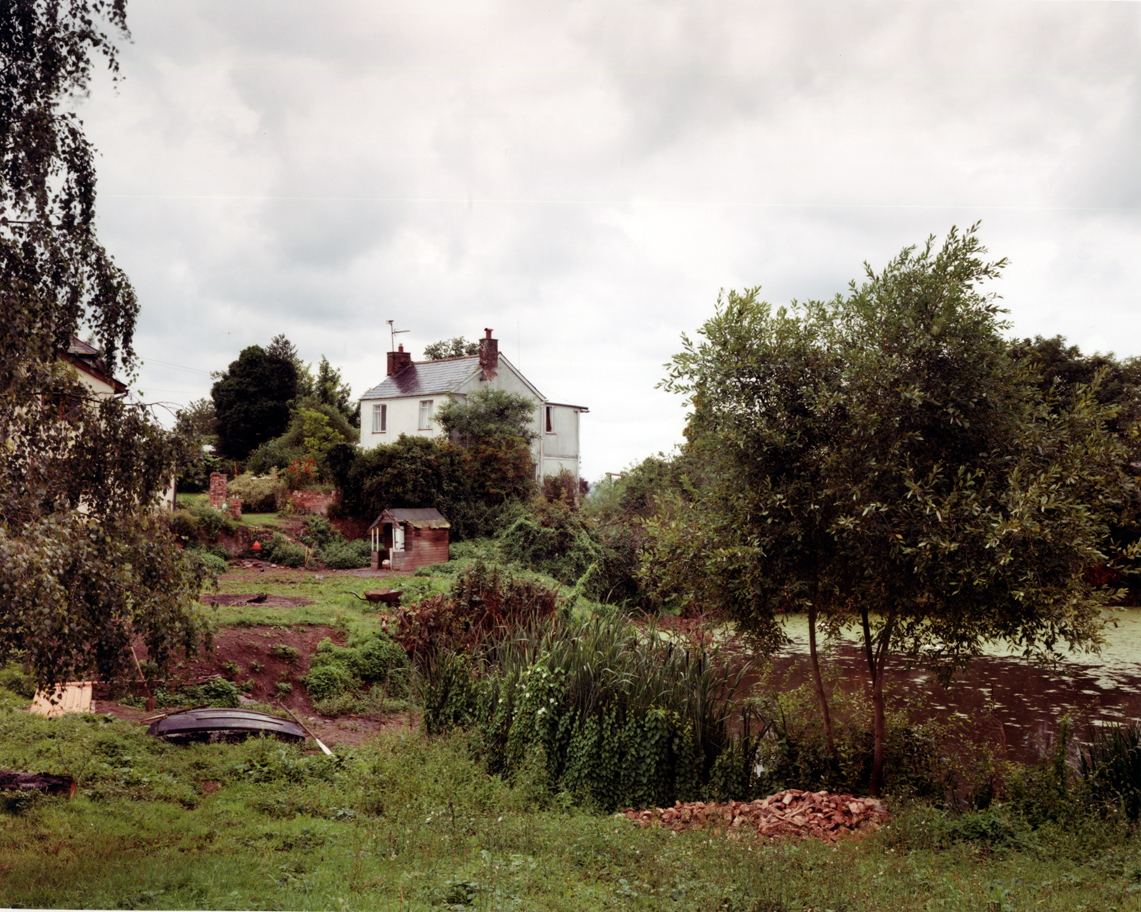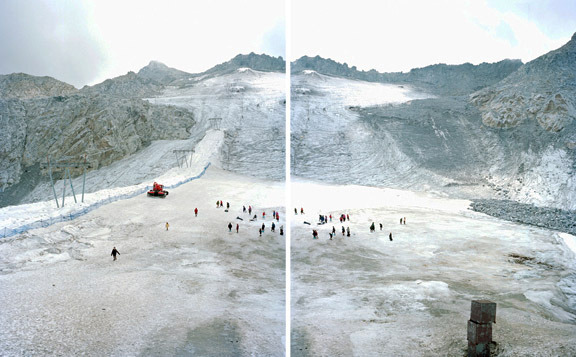Hi Everyone!
It's been quite a long time since I last posted but as I have just
finished my recent project for Uni I have decided to create a post about it!
So this is a portfolio submission of 5-10 images, min A3, max A2
in size and the subject matter was pretty much open to interpretation and in my
case it was going to be Landscape all the way! (of course).
I have always been interested in Landscape whether it's
photography or paintings mainly because of the aesthetics and
general beauty about it. I also love how we can interpret so many different
social/political issues in Landscapes which again makes this subject so
interesting.
So as I have also written a project report which will also be
submitted, I will post it here for you to look at!
Feel free to tell me what you think, I am open to comments!
Project Description
My work is particularly
focused around the idea of change in Landscape Photography, in particular ideas
of habitation and spaces or places that have been ‘interacted’ with. There has
been an exploration of the area, Basingstoke (Winklebury) which is my hometown
which suggests a relationship between photographer and the environment; which
emphasises the idea of human existence within a natural space and our
continuing relationship with the land. The work has developed by continuously
walking and exploring a place with a connection to nostalgia and ideas that I
can relate to. The images have become a representation of discoveries, weather,
and seasonal occurrences of the past few months; revisiting and taking
different routes in that particular area.
All the images appear to have a sense of mystery within them,
specifically the paths, the in-closed places and public spaces. Influences and ideas into similar themes have
been from the work of Jem Southam, Virginia Nimarkoh and 19th
Century painters; (but not limited to) who represent places that have been or
are still in use and continue to document and revisit these particular spaces.
The work also aims to address the ideas and differences around Landscape
paintings and photography, and how images create awareness about social,
political, personal and various other issues; focusing primarily on conceptual
and aesthetic meaning and understanding how the traditional ‘picturesque’
approach of 18th/19th century art has influenced are
interpretations of the modern landscape.
Project Development
The work began by exploring the surroundings of my home
and familiar places by walking and shooting; developing a feeling for the area
and knowing what works with the current weather conditions. After looking at
traditional pieces of work of wide-open spaces and beautiful scenery I felt as
though my work was venturing into a more pictorial approach and a combination
of human and natural intervention. The idea of re-visitation constantly
provokes me into going back to the same places at different times and different
days to develop a journey or story like aesthetic. During the pin-up sessions I
wanted people to feel like they were or could be in the picture, feeling a
sense of familiarity and a connection between themselves and the place.
Although the images are made in a place I personally can connect with, I didn’t
want this to restrict the ideas that people have. I would like to believe that
the Landscapes I produce, leave the mind open to interpretation, getting the
viewer wondering about that particular place, who has walked there, sat there
or what is it used for.
First
Shoot in Southampton (Construction site/Park)
Whilst
continuing to look at many images of other artists or photographers;
particularly to develop an understanding of the changes and differences
landscape art has been through, I go out on foot making images that just feel
right, places that just catch my eye. Most of my images contain traces of human
presence or man-made objects within them, for example paths, benches, and
general public spaces. Picturing the paths specifically has become something I
subconsciously do as my intentions are not to produce images of paths but are
to capture places I have been or others have been. My first shoots in general
were quite vague in terms of meaning and intentions, the aim was to explore
areas and show a relationship between man and nature, and how we have changed
the land and developed a sense power over it. I started making images of
Southampton, particularly around the parks, where we have a common interaction,
and where there is evidence of nature/man influences, specially buildings and
trees. From these images I received feedback on the lines of, ‘More nature, not
so much landscape’, ‘a sense of direction’, and, ‘interesting framing’. The
feedback sessions were very helpful in the process of elimination and which
direction to head in next. From then on I focused on where I was most familiar
with, places I knew my way round and generally where I felt most connection
with and the work started to become more fluid and interesting. In terms of
meaning, the work has developed into a way for many people to see images of the everyday, which create an awareness
of the things that are happening in the areas in which we live. A mixture of
nature and human existence really creates the contemporary feel and is an
interesting way of showing our ever expanding use of the land. In terms of
aesthetics and the traditional image, there are aspects of this through the use
of the natural environment, the images do not always suggest beauty and romance
but sometimes a sense of the forgotten and nostalgia in the surrounding the
areas.
First shoot
(Southampton Park)
Second Shoot (Basingstoke/
Winklebury-‘Tire-Swing’ Park)
Third
Shoot (Sycamore Community Centre- Winklebury)
Fourth
Shoot (Winklebury Basketball Courts)
Fifth
Shoot (Sunset- Winklebury Playing Fields)
Sixth Shoot (Foggy-
Winklebury Playing Fields)
Visual Research
The research for this project mainly
involved the work of landscape photographers and landscape painters,
particularly Virginia Nimarkoh and Jem Southam, who create narrative
explorations about familiar and common places. Also Ernst Haas (20th
Century photographer), who combines traditional techniques with the
contemporary, picturing nature and the modern world together. In essence the
photographers mentioned and 18th/19th century painters,
J. M. W Turner and Caspar David Friedrich, have influenced my work with their paintings
and the many scenic places that they offer, with the ideas behind ‘aesthetics’
of images, in particular the beauty and sublime.


Jem Southam- The Pond on Upton Pyne
The Photographer Emily Shur
was an influence from the start, focusing on the relationship between human and
environment, whether it was outside or inside, there is always a connection
either way. Eric Bessel and Jennifer Ray show how the land can be formed into
other shapes and formations through installation and purely by our involvement
and intervention. I have been very interested in how landscape photography has
majorly become about how we ‘use’ the land rather than how we see the land and
also a demonstration of man-made structures within a natural space rather than
a purely natural, untouched environment, because realistically it doesn’t
exist.

Emily Shur- Parking Lot, Arizona
Photographers Young Suk Sun
and Carl Gunhouse portray these ideas with the use of pylons, roads and billboards
within transformed natural environments. The ideas mentioned only help to
support my existing ones; along with the images I produced that aim to help
viewers create their own interpretations of the landscapes I make of

Virginia Nimarkoh- Urban Utopias
the every day, familiar
spaces. Going back to the past and looking at older landscapes has helped me to
realise why it’s so hard to produce a ‘natural’ image of the environment and
how photographers and painters today struggle to find the wide open vistas that
were much commonly demonstrated in the 17th-19th
centuries. The work of Eugene Atget shows the beginning of experimentation with
architecture and nature and is yet to be restricted to landscapes that feature
human presence. Romantic painters, J. M. W Turner and Caspar David Friedrich,
also explore these ideas above and although the difference of their work is how
they produce it, the reasons why they make the images are similar to why
photographers do. Landscape is about showing of the land, showing people what’s
out there, creating a relationship and connection between us all.

J.M.W. Turner

Ernst Haas- Monument Valley
Project Conclusion
The final
images I have chosen show evidence of change in terms of weather and
demonstrate a ‘journey’ which I have experienced by continuously photographing
the same area. The formation of the series, works in showing images taken near
to the beginning of the project and then gradually towards the end, with
obvious changes in conditions and natural occurrences. Another aim for the
project was to provoke a message of change in Landscape art and to emphasise the
need to demonstrate the progress in which artists and photographers share; from
barren waste lands to cultivated farming to thriving villages, commons and
enclosures; becoming accustomed to the changes in society, and developing
relationships with the land around us. Landscape has become about uses of land
instead of views of the land, images of personal places rather than new places;
one might question the notion of beauty when it comes down to issues around the
idea of land.
I believe my
work shows an understanding of how landscape works, how certain conditions
(weather/time of day etc) depend on what images you produce and of the thinking
and meaning behind each image. I have found it hard to eliminate certain images
from the series, but at the same time, found it hard to make a series because I
believe the images work individually as well. The next page demonstrates the
layout I feel best suits the images (This could change if exhibited). The series
has been put together by thinking about a specific pattern in which I followed,
specifically the days in which I made the images, and showing the differences
and changes in the seasonal conditions, especially the colours. It was
important that the images had a picturesque aesthetic as well as showing our
relationship to the land and habitual space around us.
Thank you for reading!
Visit www.facebook.com/rosieknightleyphotography for more work or equally visit my flickr page and like!
http://www.flickr.com/photos/58999424@N03/
Follow me on Twitter:
https://twitter.com/RosieK1992
Visit www.facebook.com/rosieknightleyphotography for more work or equally visit my flickr page and like!
http://www.flickr.com/photos/58999424@N03/
Follow me on Twitter:
https://twitter.com/RosieK1992










































_big.jpg)









